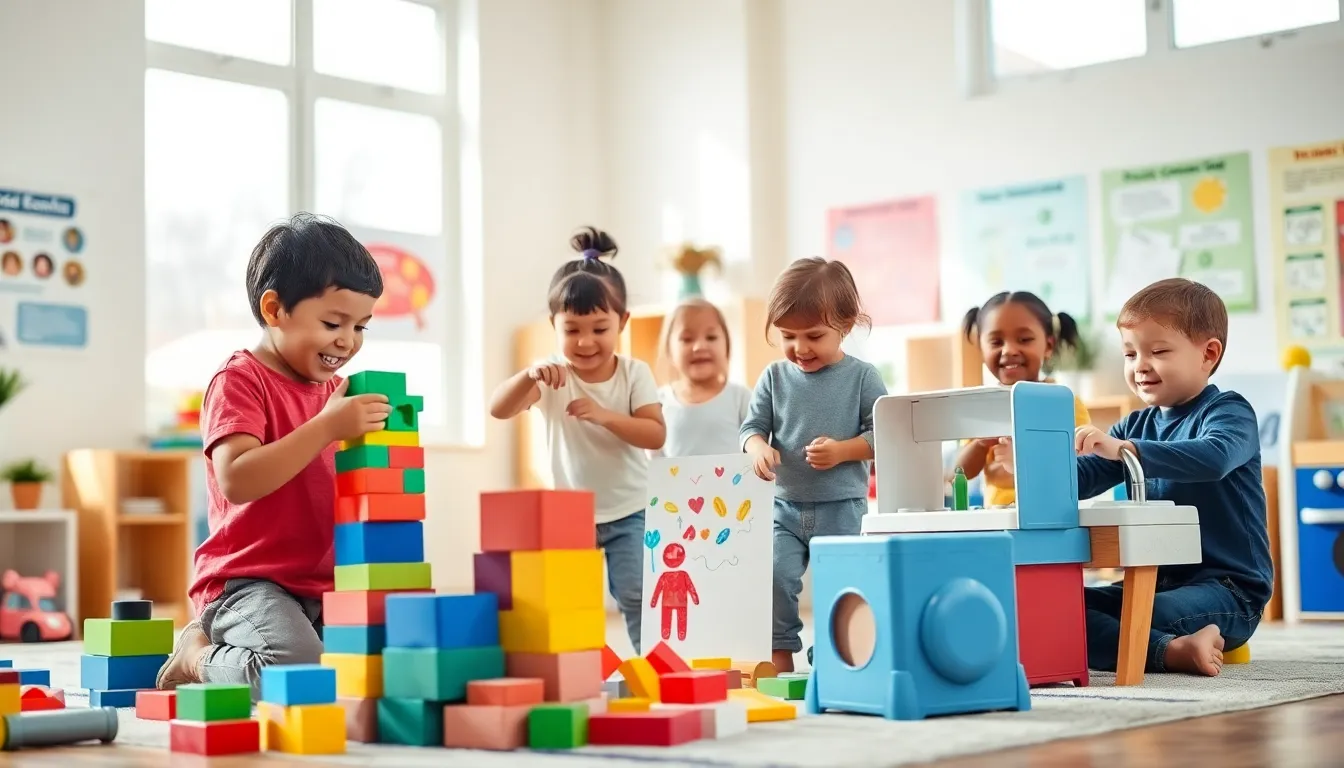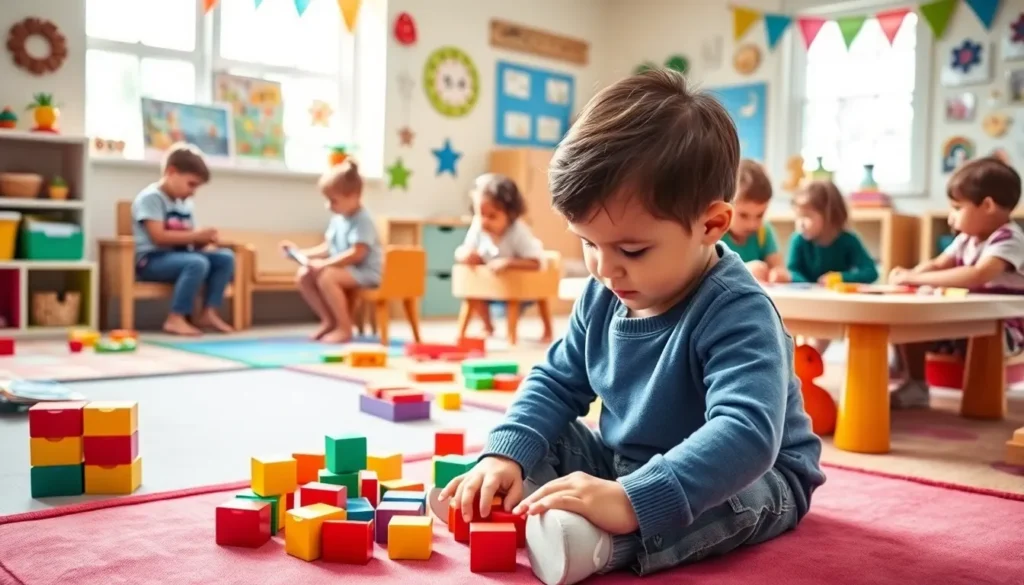Did you know that play is more than just a silly pastime for little ones? It’s a powerhouse tool for building crucial skills. Early childhood is an exciting stage full of exploration where kids are not just having fun: they are learning and growing in remarkable ways. So, if you think toddlers are simply having a ball in their toy kingdom, hold on tight, because you’re in for a delightful journey through the stages of play.
Table of Contents
ToggleThe Importance Of Play In Early Development

Play serves as a cornerstone for early development, functioning as a child’s primary method of learning about the world. At this age, kids don’t just play for amusement: they engage in activities that enhance their cognitive, physical, and social skills. Play is essential for developing problem-solving abilities and fostering creativity. Also, it actually contributes to emotional regulation and builds critical thinking skills. Overall, play lays the groundwork for future learning and relationships. This is why understanding the varied stages of play is crucial, for both parents and educators.
Understanding The Stages Of Play
As children grow, their play evolves through distinct stages. Each stage presents specific characteristics and benefits that contribute to various developmental aspects.
Stage 1: Solitary Play
Characteristics Of Solitary Play
In the solitary play phase, typically seen in children aged 0 to 2, kids are entirely focused on their own activities. They often play alone, seemingly oblivious to their surroundings, displaying intense concentration. Whether it’s stacking blocks or flipping through picture books, they immerse themselves in imaginative worlds of their own.
Developmental Benefits Of Solitary Play
This stage is vital for fostering independence and self-reliance. Children learn to entertain themselves and explore their interests without external influences. It also provides opportunities for them to develop fine motor skills, as they manipulate objects at their own pace.
Stage 2: Parallel Play
Characteristics Of Parallel Play
Transitioning into parallel play, usually occurring between ages 2 and 3, children begin to play alongside others. They may engage with similar toys but do not interact directly. For instance, one child might build a tower next to another kid working on a puzzle, but they typically won’t share or collaborate.
Developmental Benefits Of Parallel Play
This stage encourages children to enhance their social awareness. They learn to observe and imitate others, developing social skills while still feeling comfortable in their independent play zones. It helps to prepare them for more interactive stages of play in the future.
Stage 3: Associative Play
Characteristics Of Associative Play
Around ages 3 to 4, children enter the associative play stage. Here, they start to engage with one another more directly, sharing toys and taking part in similar activities. They might trade building blocks or join forces to create a shared artwork.
Developmental Benefits Of Associative Play
This stage enhances sharing and cooperation skills. Children learn to express their feelings and communicate, paving the way for friendships. It also helps them understand the concept of teamwork.
Stage 4: Cooperative Play
Characteristics Of Cooperative Play
Finally, we reach cooperative play, typically seen in ages 4 to 6. Children engage in group activities with a common goal. Games like tag or role-playing scenarios exemplify this stage where children negotiate rules and take on specific roles.
Developmental Benefits Of Cooperative Play
Cooperative play fosters stronger social skills, empathy, and leadership qualities. Participants learn how to address conflicts, compromise, and collaborate, which are all vital components of effective communication.
Encouraging Play At Each Stage
Creating an environment that supports each stage of play is crucial for optimal development.
Creating A Supportive Play Environment
Parents and caregivers play a pivotal role in facilitating play experiences. Providing a safe, diverse, and stimulating environment filled with appropriate toys fosters exploration at all stages. It’s essential to offer both solitary options and opportunities for social interaction.
Activities To Promote Each Stage Of Play
- For Solitary Play: Encourage independent exploration with building sets, art supplies, or books. Simple materials can spark imagination.
- For Parallel Play: Arrange play dates where children can engage in activities side by side, like color groups or sandbox play.
- For Associative Play: Introduce group tasks that require sharing like crafts, where kids can trade supplies. Arm them with the tools for creativity while learning to collaborate.
- For Cooperative Play: Set up team games, such as group puzzles or scavenger hunts. These can foster communication and cooperative problem-solving.




